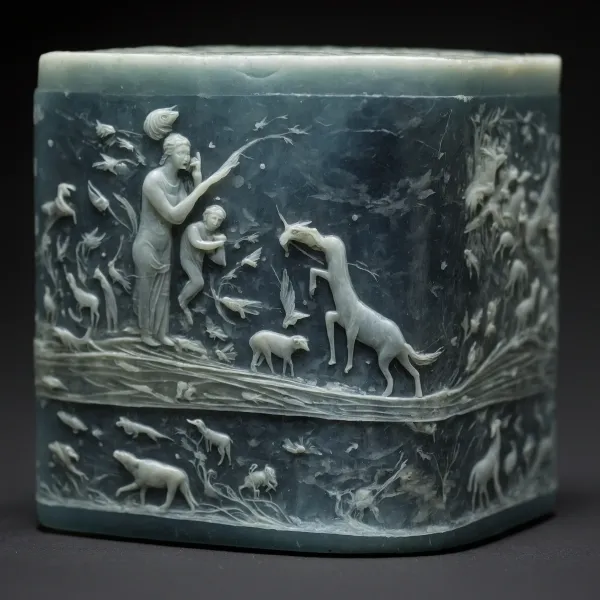Classic Horror
These ancient Roman marble sculptures, attributed to the enigmatic artist Thanatophanes, depict anguished expressions that have bewitched scholars and visitors alike. But what lies behind their agonized faces?

H.C. Ravensfield called the northern corridor on the lower floor of his museum The Gasping Gallery, due to the reaction most visitors experienced when confronted with the Classic Roman busts that decorate the promenade—marble faces caught in a eternal scream.
The "Screaming Busts" date from the first century AD, and although their technique and material match the tradition of ancient Roman sculpture, their particular expressiveness set them apart.
We attributed these pieces to the sculptor Thanatophanes thanks to Roman historian Gaius Cornelius and his compendium Luminarium Artium:
The sculptor Thanatophanes, whose craftsmanship is renowned, is known to imbue his works with an intense agony, each crease on the faces wrought with the sorrow of their subject. Many a time have I gazed upon his creations, and felt my heart ache with an unnamable sadness. For such art, while beautiful, reminds us of the harsh realities of the world, of pain and suffering that we must bear in our fleeting lives.
-Gaius Cornelius, "Luminarium Artium"
Thanatophanes is also the main character in poet Aurelius Maro's Daemonia in Marmore. In this case, he's represented as a tragic figure who held supernatural foresight, echoing mythical figures such as Cassandra:
Thanatophanes, the sculptor, with his artful eye, crafted beauty to please both the high and the lowly. But as time went on, his sight became too keen, and his mind was plagued with dreadful scenes of the future. And so he wrought in marble his fright, to speak to future generations what words could not convey.
-Aurelius Maro, "Daemonia in Marmore"
This dichotomy between fact and myth in the sculpture's biography have led some experts to doubt the sculptor's actual existence.

The busts were found by a team of Italian and British archeologists in 1922. They adorned a hidden underground shrine located outside the ruins of Herculaneum, one of the towns lost in the eruption of Mount Vesuvius in 79 AD.
The walls of the small circular sanctuary showed a series of square niches—all of them hosting a different screaming bust—placed around a marble altar, which was empty. Due to the shrine being sealed with pumice and ash after the eruption, the busts were extremely well preserved.
Because of how much the temple's architecture resembled a mausoleum, and its unique location underground, ancient religion scholars have theorized it was constructed to venerate Pluto, the Roman god of the Underworld.
H.C. Ravensfield added the first Screaming Bust to his collection in 1934. Since then, several members of the Ravensfield family have acquired the busts from this invaluable series, until all of the pieces became part of the museum, now guarding its northern corridor.
The last bust, that might have occupied the empty altar, has never been unearthed as of yet.





